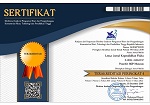The Role of Artificial Intelligence (AI) in Transforming Physics Education: A Narrative Review
DOI:
https://doi.org/10.33394/j-lkf.v12i2.13523Keywords:
Artificial intelligence, Physics education, Personalized learning, Adaptive learning, Interactive simulationsAbstract
Artificial Intelligence (AI) has brought transformative changes to education, particularly in the field of physics, where complex concepts often pose significant challenges for students. This narrative review explores the role of AI in physics education by analyzing various tools and methods currently applied in learning environments, including intelligent tutoring systems, adaptive learning platforms, and interactive simulations. The study aims to assess the benefits and limitations of these technologies, as well as their potential to enhance learning outcomes through personalized, adaptive, and interactive experiences. Utilizing the SCOPUS database, a wide-ranging literature search was conducted with relevant keywords to capture studies that contribute to understanding AI’s impact on physics education. Results indicate that AI-driven tools significantly improve student engagement, accessibility, and understanding of abstract concepts by offering tailored learning pathways, real-time feedback, and immersive simulations. Additionally, AI provides alternative access to learning for students from diverse backgrounds, fostering inclusivity in physics education. However, challenges such as dependency on AI, ethical issues related to data security, and the potential digital divide are noted as barriers to effective implementation. To address these issues, the review recommends a balanced approach where AI complements traditional teaching methods, ensuring that it enhances rather than replaces human instruction. This review highlights the transformative potential of AI in physics education, advocating for further research to develop structured, ethical, and inclusive integration strategies that maximize the educational benefits of AI while addressing its limitations.
References
Ding, L. (2023). Students’ perceptions of using ChatGPT in a physics class as a virtual tutor. International Journal of Educational Technology in Higher Education, 20(1). https://doi.org/10.1186/s41239-023-00434-1
Dong, Z. (2023). Research on the current situation and countermeasures of cultivating talents in recreational sports under the perspective of artificial intelligence. Applied Mathematics and Nonlinear Sciences, 9(1). https://doi.org/10.2478/amns.2023.2.00161
Duy, H. T., Ngoc, C. T., & Hai, N. T. (2024). Building and using chatbots in the process of self-studying physics to improve the quality of learners' knowledge. Humanities and Social Sciences Letters, 12(4), 1165–1185. https://doi.org/10.18488/61.v12i4.3859
Jing, Y. (2023). The role of integrating artificial intelligence and virtual simulation technologies in physics teaching. Advances in Education Humanities and Social Science Research, 6(1), 572. https://doi.org/10.56028/aehssr.6.1.572.2023
Kurniawan, W., Riantoni, C., Lestari, N., & Ropawandi, D. (2024). A hybrid automatic scoring system: Artificial intelligence-based evaluation of physics concept comprehension essay test. International Journal of Information and Education Technology, 14(6), 876–882. https://doi.org/10.18178/ijiet.2024.14.6.2113
Lee, H., & Lee, J. (2021). Applying artificial intelligence in physical education and future perspectives. Sustainability, 13(1), 351. https://doi.org/10.3390/su13010351
Liang, Y., Zou, D., Xie, H., & Wang, F. L. (2023). Exploring the potential of using ChatGPT in physics education. Smart Learning Environments, 10(1), Article 52. https://doi.org/10.1186/s40561-023-00273-7
Liu, T., Wilczyńska, D., Lipowski, M., & Zhen, Z. (2021). Optimization of a sports activity development model using artificial intelligence under new curriculum reform. International Journal of Environmental Research and Public Health, 18(17), 9049. https://doi.org/10.3390/ijerph18179049
Mahligawati, F. (2023). Artificial intelligence in physics education: a comprehensive literature review. Journal of Physics: Conference Series, 2596(1), 012080. https://doi.org/10.1088/1742-6596/2596/1/012080
Mahligawati, F., Allanas, E., Butarbutar, M. H., & Nordin, N. A. N. (2023). Artificial intelligence in physics education: A comprehensive literature review. Journal of Physics: Conference Series, 2596(1), Article 012080. https://doi.org/10.1088/1742-6596/2596/1/012080
Menchafou, Y., Aaboud, M., & Chekour, M. (2024). Effectiveness of virtual labs for physics learning in Moroccan secondary schools. International Journal of Interactive Mobile Technologies, 18(15), 129–143. https://doi.org/10.3991/ijim.v18i15.48447
Mustofa, H. (2024). Utilizing AI for physics problem solving: a literature review and ChatGPT experience. Lensa Jurnal Kependidikan Fisika, 12(1), 78. https://doi.org/10.33394/j-lkf.v12i1.11748
Sánchez-Guzmán, D., & Mora, C. (2010). Intelligent agents in physics education. AIP Conference Proceedings, 1263, 227–229. https://doi.org/10.1063/1.3479875
Swandi, A., Amin, B. D., Viridi, S., & Eljabbar, F. D. (2020). Harnessing technology-enabled active learning simulations (TEALSim) on modern physics concepts. Journal of Physics: Conference Series, 1521(2), Article 022004. https://doi.org/10.1088/1742-6596/1521/2/022004
Wang, L., Kim, Y. J., & Shute, V. (2013). "Gaming the system" in Newton's playground. CEUR Workshop Proceedings, 1009, 85–88. Retrieved from https://www.scopus.com/inward/record.uri?eid=2-s2.0-84924989754
Wulff, P. (2024). Physics language and language use in physics—What do we know and how AI might enhance language-related research and instruction. European Journal of Physics, 45(2), Article 023001. https://doi.org/10.1088/1361-6404/ad0f9c
Yongxian, W., Guozhu, J., & Ling, L. (2020). Design of evaluation and recommendation system for high school physics learning based on knowledge graph. Proceedings of the 2020 International Conference on Modern Education and Information Management (ICMEIM), 824–827. https://doi.org/10.1109/ICMEIM51375.2020.00183
Zhu, Y., Khoo, Z.-Y., Choong Low, J. S., & Bressan, S. (2024). A personalized learning tool for physics undergraduate students built on a large language model for symbolic regression. Proceedings of the 2024 IEEE Conference on Artificial Intelligence (CAI), 38–43. https://doi.org/10.1109/CAI59869.2024.00017
Downloads
Published
How to Cite
Issue
Section
Citation Check
License
Authors who publish with Lensa: Jurnal Kependidikan Fisika agree to the following terms:
- For all articles published in Lensa: Jurnal Kependidikan Fisika, copyright is retained by the authors. Authors give permission to the publisher to announce the work with conditions. When the manuscript is accepted for publication, the authors agree to automatic transfer of the publishing right to the publisher.
- Authors retain copyright and grant the journal right of first publication with the work simultaneously licensed under a Creative Commons Attribution-ShareAlike 4.0 International License that allows others to share the work with an acknowledgment of the work's authorship and initial publication in this journal.
- Authors are able to enter into separate, additional contractual arrangements for the non-exclusive distribution of the journal's published version of the work (e.g., post it to an institutional repository or publish it in a book), with an acknowledgment of its initial publication in this journal.
- Authors are permitted and encouraged to post their work online (e.g., in institutional repositories or on their website) prior to and during the submission process, as it can lead to productive exchanges, as well as earlier and greater citation of published work (See The Effect of Open Access).

This work is licensed under a Creative Commons Attribution-ShareAlike 4.0 International License.

.png)

